Most board-certified plastic surgeons agree that breast implants do not automatically need to be replaced at the 10-year mark, or at any other annual milestone for that matter.
But also, that breast implant recipients may choose or need to have their implants removed or replaced for a variety of reasons—whether altering their size or style, or because they suffer an adverse health event (like capsular contracture or cancer).
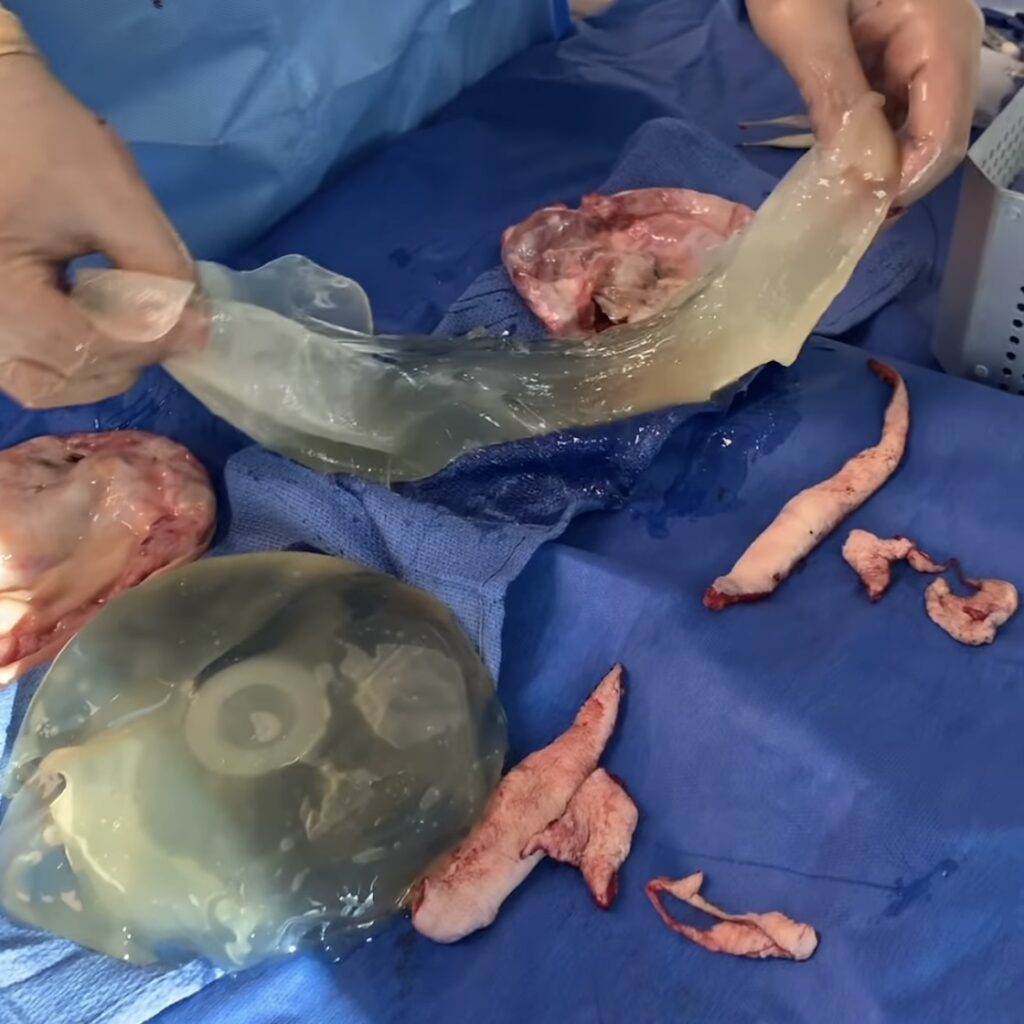
So while there is no hard and fast rule that old breast implants be replaced after a certain number of years, many patients will find that by their 10-year breast augmentation anniversary, they have had to have 1-2 additional breast surgeries.
Other patients may do just fine at the 10-year mark and well beyond.
Financial Incentives Affect 10-Year Rule
Two popular surgeon-influencers go so far as to say this 10-year rule is actually propagated by greedy or unethical surgeons, who want the repeat business that implant replacements offer.
The opposite may be more accurate: Many surgeons, who received some portion of a combined $1.54-Billion in patient fees last year for primary breast augmentation surgery alone, perpetuate a facade of almost total safety with regard to breast implants.
Replace them every 10 years? Of course not!
They’re so durable we’ll even run them over with the Rolls-Royce your patient fees paid for.
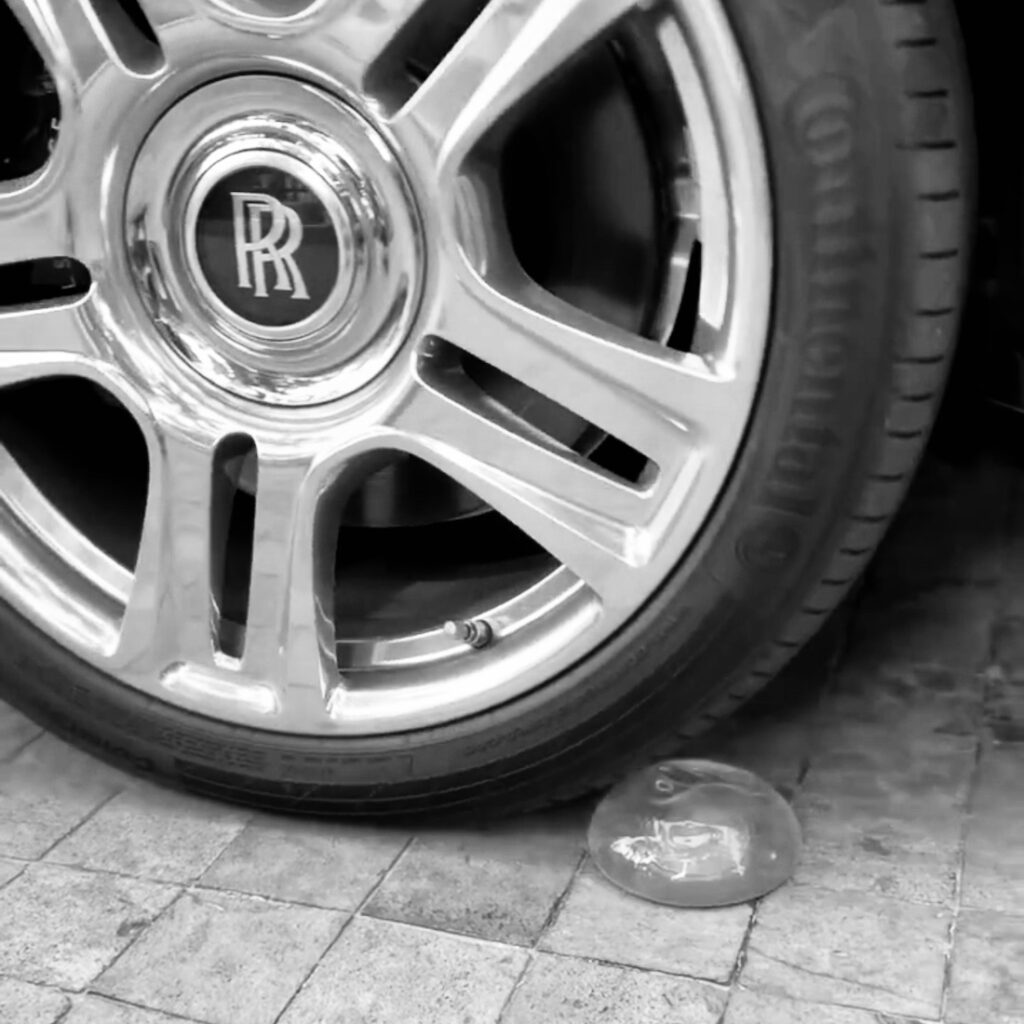
Behind The 10-Year Rule
Below we look at what several board-certified plastic surgeons have shared about whether or not breast implants need to be replaced every 10 years.
To help place their answers into context, we start with:
- How many women who get breast implants end up requiring additional breast surgeries.
- How many women had their breast implants removed in 2021, relative to how many women newly received breast implants in 2021.
Adding to patient confusion, when it comes to breast implant replacement timelines, it comes to a matter of “ask a different surgeon, get a different answer.”
Thus, combined, this information may help you become your own best advocate.
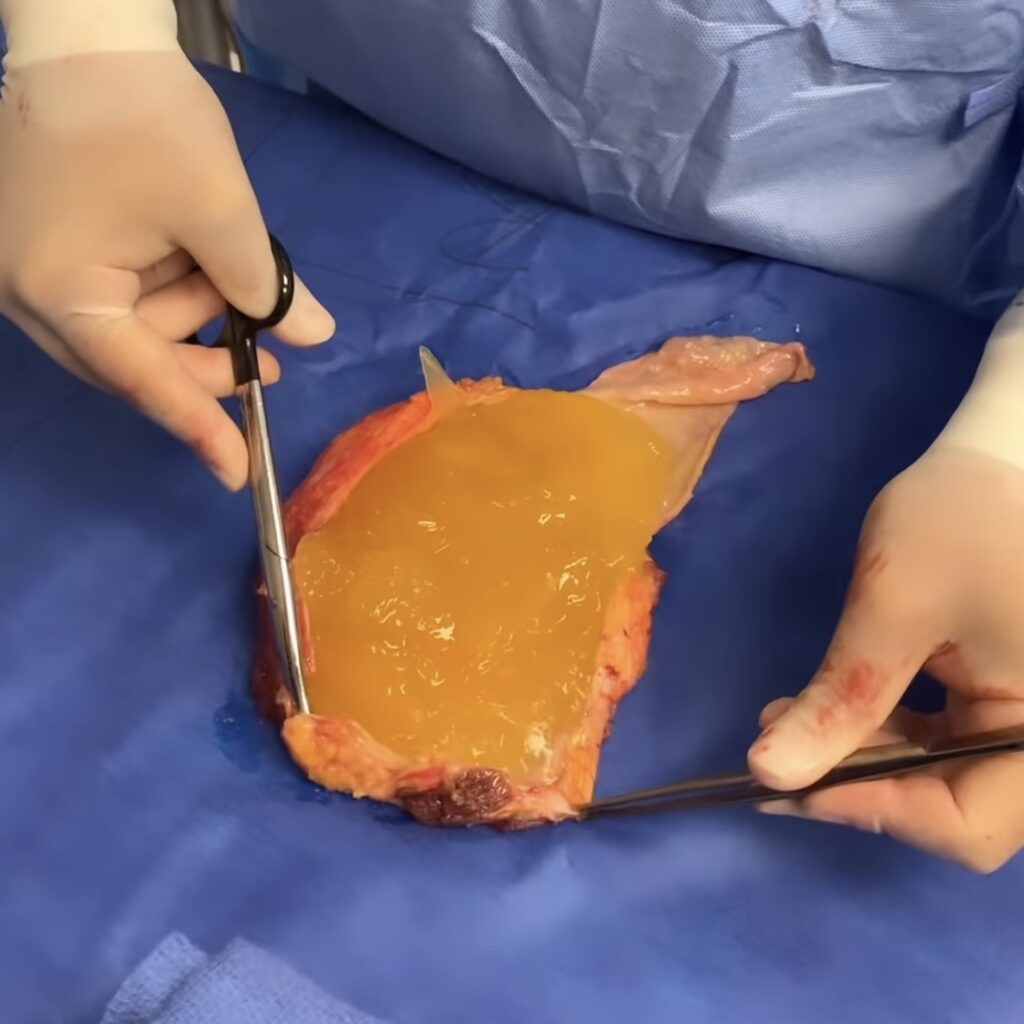
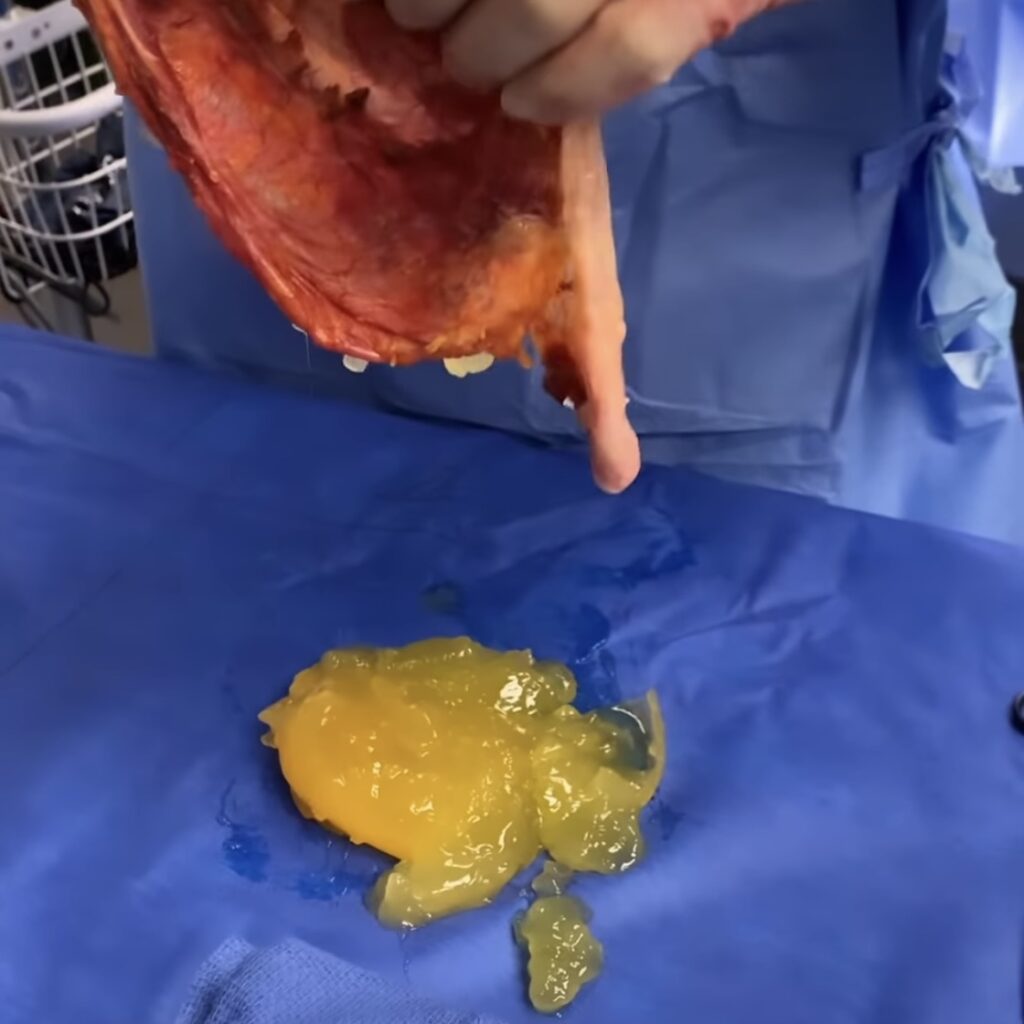
1. Breast implant reoperation rates
Reoperation rates after breast augmentation surgery vary by manufacturer and by implant type.
Sientra, for instance, accurately advertises having the “lowest reoperation rate,” which it defines as “any additional surgery performed to the breast after the first breast implantation.”
Yet women signing Sientra’s patient decision checklist will attest to understanding that the long-term risks of breast implants may include reoperation, which is “reported in up to 42.5% of patients.”
Further, as many as 11.4 percent of women getting Sientra breast implants had them removed within three years of getting them, the checklist also says.
Statistically, patients using any brand of breast implants should feel rather lucky if they reach their 10-year breast augmentation anniversary without encountering the need to undergo one or more additional corrective or revisionary surgeries.
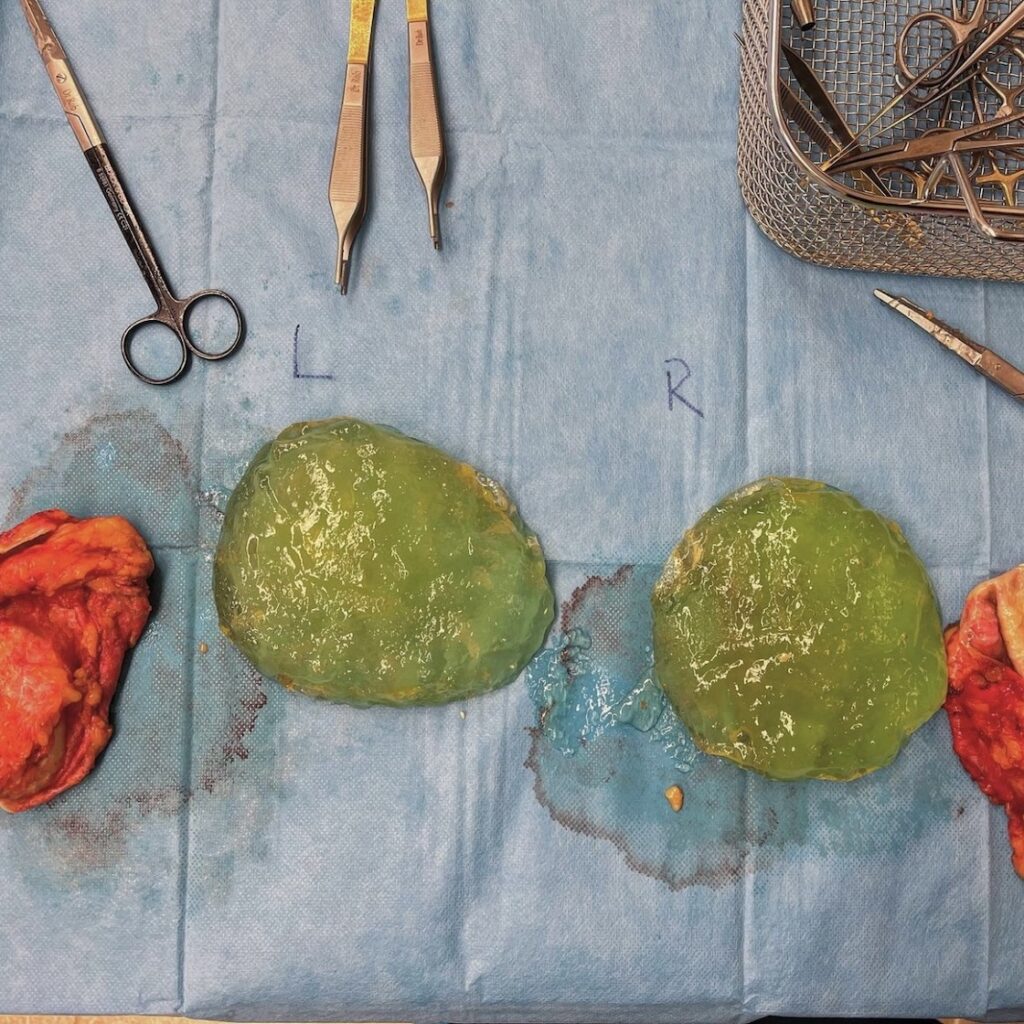
Reasons for re-operation, within 3-years of getting breast implants:
Studies, such as those included in FDA-approved Directions for Use for breast implants, help us better understand why breast implants would need to be replaced.
In one such study, 22 percent of participants had a second breast surgery for cosmetic reasons, and 78 percent had a second breast surgery to resolve a dangerous, unsightly, or painful condition.
- 78% of patients who underwent reoperation had suffered a problem with their breast implants. From most to least common, these problems included: Capsular contracture, ptosis, hematoma or seroma, scarring or hypertrophic scarring, infections, asymmetry, rippling and wrinkling, delayed wound healing, formation of a mass, lump, or cyst, nipple-related complications, breast cancer, implants sitting too high, and pain.
- 22% of patients who underwent reoperation had requested a change in the size or style of their breast implants.
And that was at the 3-year mark, nevermind the 10-year.
As these are merely the complications that required an additional surgery (reoperation), there may have been lesser complications that will later require revision surgery.
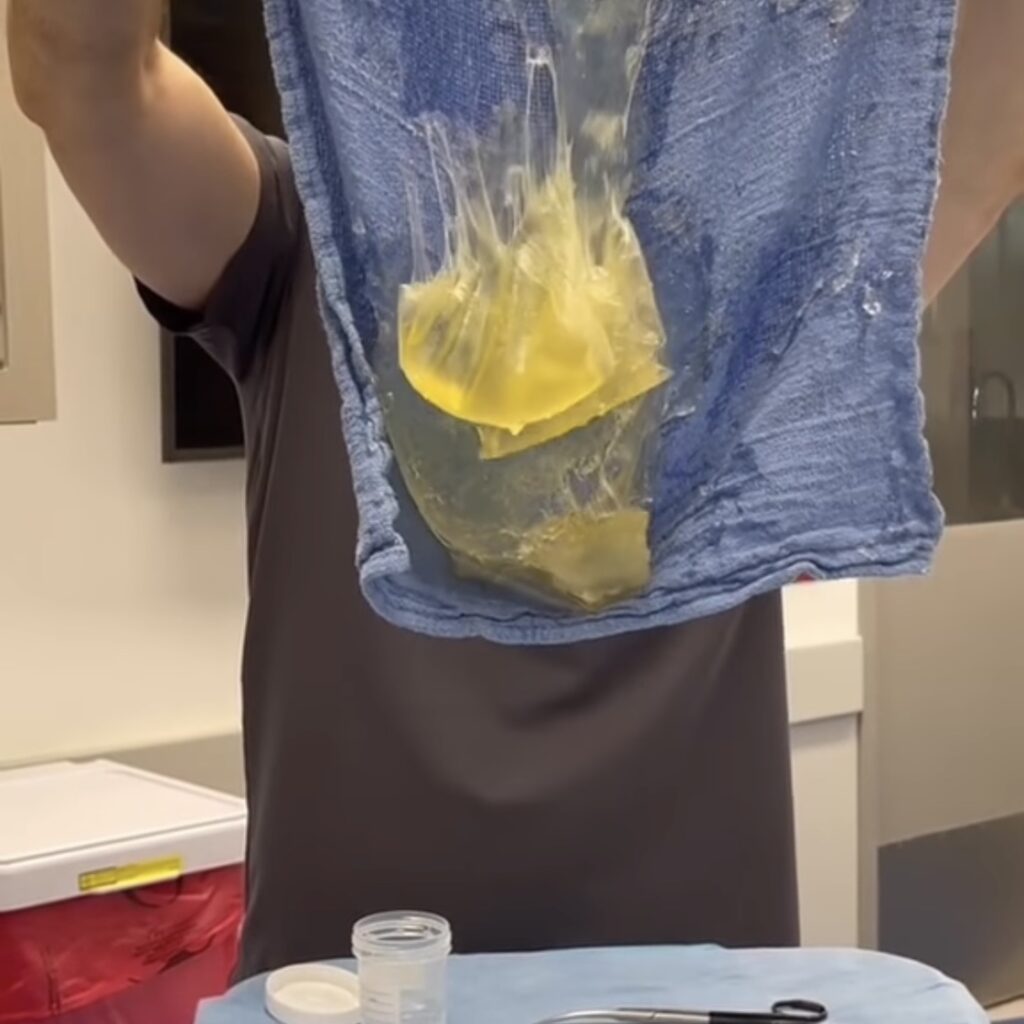
2. For every 100 U.S. women who received breast implants in 2021, 60 other women had their implants replaced or removed permanently.
For every 100 women in America who chose to get breast implants in 2021, another 60 women who already had breast implants chose that year to have them either removed and replaced, or removed permanently.
In total, just shy of 365,000 U.S. women underwent primary breast augmentation surgery in 2021.
Another 219,000 women, who already had breast implants, chose to have them removed.
Of these 219,000 women, 148,000, or 68 percent, chose to have new implants put in, while 71,000, or 32 percent, chose to have their implants removed permanently.
The permanent removal of breast implants by women also increased by 47 percent over the prior year, according to statistics published by The Aesthetic Society.
3. Do I Need to Replace My Implants Every 10 Years?
Plastic surgeons hold varying opinions on whether breast implant recipients will need to have their implants replaced every 10 years. Following is what the U.S. FDA and several board-certified plastic surgeons have shared on this.

U.S. FDA and Plastic Surgeons Answer: “Do Breast Implants Need to be Replaced Every 10 Years”
“Breast implants are not lifetime devices.”
“Breast implants are not lifetime devices. The longer you have your implants, the more likely it will be for you to have them removed or replaced. You should assume that you will need to have additional surgeries (reoperations) because breast implants are not lifetime devices and complications can occur.” — U.S. Food and Drug Administration, September 8, 20221
“[Breast implants] must be replaced at least every 10 years.”
“[Breast] Implants are not lifetime devices. They must be replaced at least every 10 years.” — Dr. Catherine Begovic, M.D., Sept. 18, 20222
“The ‘10-year [breast implant replacement] rule’ really isn’t a rule.”
“So [the] number one [myth] that I hear all the time from patients coming in for breast implants, is that they need to replace them every 10 years.
“It was originated from the fact that the original breast implants many years ago were warrantied for 10 years.
“A lot of patients had that number in their brain. Doctors mentioned it, because that warranty ran out.
“Didn’t mean the implants went bad. Same thing as a car warranty, anything else.
“Doesn’t mean they’re going to explode or anything bad’s going to happen.
“Since then, these implants have now become warrantied for a lifetime so that ‘10-year rule,’ really isn’t a rule.” — Dr. Gary Motykie, M.D., September 15, 20223
“It is a total myth that implants need to be changed every 10 years.”
“It is a total myth that implants need to be changed every 10 years.
“I would never marry a patient to a procedure every 10 years.
“Rupture rates are about 1% per year.
“That said, they will not last forever[,] people. You will have at least 2 surgeries depending [on] how young you are when you get them.
“Ask all the questions at your consult. Be your best advocate, then you decide.” — Dr. Richard J. Brown, M.D., Aug. 23, 20224
“There is a lifespan for breast implants; typically, 10 to 15 years.”
“Fact: Over time all implants will eventually break (rupture). There is a lifespan for breast implants; typically, 10 to 15 years.
“Implant rupture rates are approximately one percent per year but go up after 10 years. One can expect your implant to last approximately 10 to 15 years. Since a woman may not always feel or see when a rupture in her implants has occurred, magnetic resonance imaging (MRIs) may be needed every few years to monitor for any sign of trouble. […]
“Other than rupture, there can be other potential complications like infection, capsular contracture, or even a rare lymphoma associated with implants, that should be assessed periodically by your surgeon.” — Dr. Saïd C. Azoury, M.D., August 9, 20225
“If they’re not causing any problem at 10 years, probably fine and could last several years longer.”
“There’s a lot of information out there suggesting that people should change out their breast implants at 10 years. And I think that should be a personal choice and you should make an informed decision based on a conversation you have with your own doctor.
“The risk of having implants exchanged is not zero, so leaving them in sometimes is a better option for people. […]
“But the implants themselves, if they’re not causing any problem at 10-years, are probably fine and could last several years longer.” — Dr. Stephan Finical, M.D., Feb. 2, 20226
“Definitely…have [your breast implants] replaced at 10 years.”
“Are your implants saline, or are they silicone?
“If they are silicone, chances are, you definitely want to have them replaced at 10 years. Because if silicone implants rupture, they can leak out silicone into the body, which we don’t think is very good.
“If they’re saline, they could still rupture, but it’s not a big deal because the saline goes through the body pretty quickly.
“Now, if your implant ruptures and it’s saline, you really want to get it fixed within two weeks. Otherwise, the breast starts to contract.
“So my advice [with saline breast implants] is around 10 years, start looking [for a surgeon] and get it replaced before it ruptures.” — Dr. Daniel Barrett, M.D., Sept. 7, 20187
“If you don’t have a problem with your implants, you don’t need to have them exchanged.”
“Do I have to have my implants replaced every 10 years? No! You do not. […]
“If you don’t have a problem with your implants, you don’t need to have them exchanged. It’s a myth. It’s an old wives tale.
“But one thing I will talk to you about is implants do have a rupture rate.
“They’re man-made devices, and at some point they’re going to fail, especially if you get them younger in life.” […]
“These [saline and silicone] implants are going to fail at some point.
“So the general rule that we tell patients is 1% per year. So at 10 years, maybe you have a 10 percent risk of rupture, and so on and so forth. So the farther you get out, the weaker the shell becomes and the more prone it becomes to rupture.
“So the 10-year rule is not a real rule where you have to have them replaced every 10 years. If you’re happy with the way you look and the way you feel, don’t feel like you need to rush in to have them changed every 10 years.” — Dr. Richard J. Brown, Aug. 26, 20208
“If you were going to have a problem, it probably is going to happen around the 10-year mark.”
“The quick answer is ‘No.’ These aren’t car tires.
“Breast implants can last forever and, technically, you can live with them in your body for the rest of your life. […]
“Now, one thing to keep in mind is that…the studies show that if you were going to have a problem, it probably is going to happen around the 10-year mark.
“If you’re a young patient and you’re getting breast implant surgery, just understand that at some point in your life, you might have another surgery on your breasts. But it’ll be because you want to, not because you have to.
“So, no, you don’t have to have your breast implants changed every 10 years as long as you’re happy with them and there’s no problem.” — Dr. Matthew Schulman, M.D., June 21, 20189
Originally published October 24, 2022.
